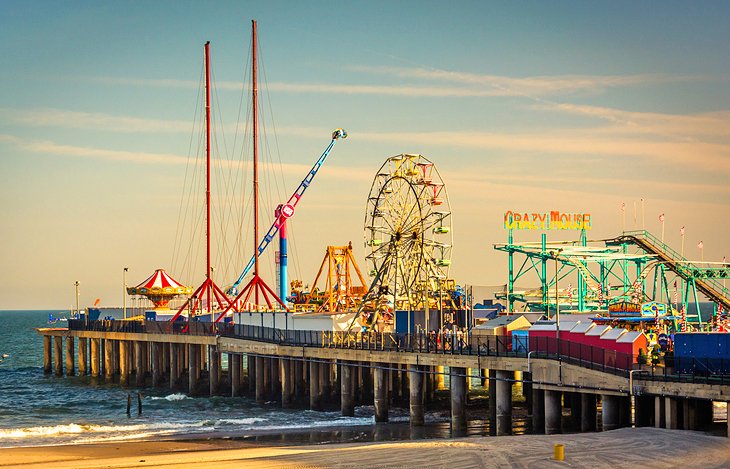Atlantic Theme Parks

Amusement and Theme Parks Permanent outdoor recreation areas have been around at least as long as written history. Public areas are among the essential amenities any society develops, and their improvement is relatively cheap advertising for the local monarch (large statues make great decorations). But public resort areas with amusement facilities did not appear in Europe until the Renaissance. In England, they were called 'pleasure gardens,' and they flourished from about 1550 to 1700.
They first appeared in the form of resort grounds operated by inns and taverns. They quickly proved good for business, and became more elaborate. Vauxhall Gardens opened in London in 1661 covering 12 acres, and admission was free.
Sycode Obj Export Keygens here. An amusement park is a park that features various attractions, such as rides and games, as well as other events for entertainment purposes. A theme park is a type of. Amusement Park deals in Atlantic City, NJ: 50 to 90% off deals in Atlantic City. $35 for Single-Day Ticket to A Very Furry Christmas with Meal at Sesame Place ($52.99 Value). Friday or Sunday Admission for One to CoCo Key Water Resort (Up to 30% Off). Admission at Camden Children's Garden (Up to 39% Off).
Internet users reviews of theme parks and attractions from around the world, including a news and accident reports.
Entertainment was provided: acrobatic acts, fireworks, music — Mozart performed the re as an 8-year-old prodigy in 1764. Kadhalikka Neramillai Serial Audio Song. Professional showmen saw the money-making potential of the concept, and began operating them for profit. In early America, amusement parks began as picnic grounds. Some were built by local breweries (there's much more profit when you can sell your beer directly, rather than through middlemen). These 'beer gardens' offered the working man an inexpensive day's relaxation for the family, including plenty of open space, concerts, sometimes bathing, and always beer and food. Nicholas Mcdonald Answerphone Free Mp3 Download. Attendance was promoted by streetcar companies and local railroad and excursion boat operators.
Many parks were developed by trolley companies. They bought their electricity at a flat monthly rate — build amusement parks at the end of the line and you boosted weekend use at little added expense! Before long, hundreds of such parks were built all over the country. Expositions, particularly the 1893 Chicago World's Columbian Exposition, provided another model for American amusement parks. The Chicago event was the first to concentrate rides, shows and concessions in a separate 'midway.' As discussed in a previous chapter, these expositions attracted teeming crowds with a multitude of lures: entertainment, education, recreation, and trade. Entrepreneurs soon learned that each attraction could boost its attendance by virtue of its proximity to every other popular feature, and that all of them together could turn profits that could never be realized by stand-alone attractions.
The story of amusement parks is largely the story of George C. Tilyou, a masterful entrepreneur whose vision created the amusement park in a form that remained unchanged until Disney created theme parks. Coney Island New York City had the money and the crowds: finances to build parks and a huge pool of working-class families looking for close and affordable relief from the grim realities of daily life. Coney Island, a five-mile stretch of beach at the entrance to New York Harbor where Brooklyn meets the sea, was already a popular seaside resort for the city and environs. A pleasant and largely undeveloped spot so close to a huge population in need of close and cheap recreation, it was destined to become home to a succession of wonderful parks.
Comments are closed.